Bjerkandera fumosa
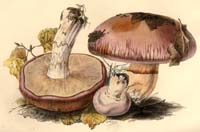 Key to Gilled Mushrooms Key
Key to Gilled Mushrooms KeyThis is a key to gilled mushrooms, that is, mushrooms having a definite cap with a fertile surface consisting of gills. The fruiting body usually also has a stem, although that may be lateral or absent (usually, then, the mushroom is growing from wood). You can use this key to identify mushrooms that you find.
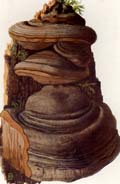 Polyporaceae Family
Polyporaceae FamilyFertile surface usually a layer of vertical tubes, of which the mouths are visible as pores on the underside of the cap or shelf.
Fruiting bodies usually tougher or harder than the "normal" gilled mushrooms, being leathery, corky, or woody. But they can be quite tender while actively growing
Once grown, they do not decay easily, remaining on the substrate for months or years
They often grow on wood, although a few are terrestrial (even those are usually growing on buried wood)
Fruiting body is usually a flat shelf, or hoof-shaped, protruding directly from the substrate, although sometimes it may have a short stalk.
Some forms never grow away from the substrate at all, so that all that is visible of the fruiting body are the pores.
Sometimes the pores are so minute that the fertile surface seems solid, until you look closely
 Lignicopolypore Subfamily
Lignicopolypore SubfamilyGrowing on wood
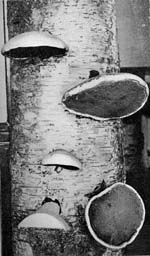 Whiteoporus Tribe
Whiteoporus TribeSessile cap entirely white to buff
Pores concolorous or yellow or pale grey, sometimes darkening in age to grey or even black
Sometimes with moss or algae growing on the cap (coloring it green)
 Bjerkandera Genus
Bjerkandera GenusAll grey to dark grey pore surfaces go here, but pore surface may also be buff to smoky grey
Cap surface creamy to greyish and velvety to hairy when young
Fruiting bodies flexible, sessile, effused-reflexed, sometimes resupinate, often in imbricate clusters
Causes a white rot in hardwoods (rarely on conifers)
Here are the characters that distinguish this species from the others in its group. For its more general characters, see higher up on the page.
If there's just a few words or a microscopic feature here, a more thorough description can be found above.
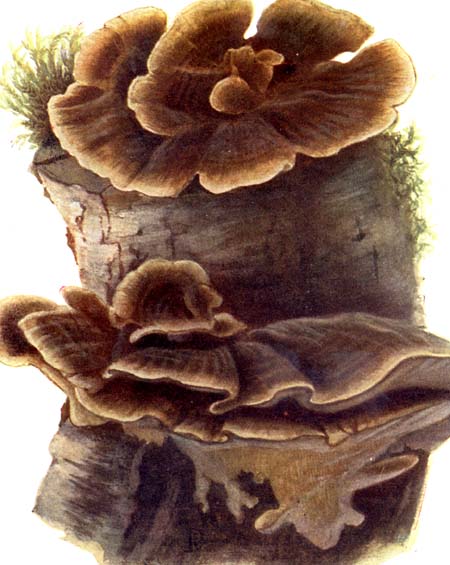
Diagnosis
- Cap fleshy, wider and thicker than B. adusta: up to half an inch thick and 4" wide, with a black line separating the pores from the cap
-
Has an anise-like (or unpleasant) odor
-
Pores larger and lighter than B. adusta: buff to smoky gray, 2-5 per mm

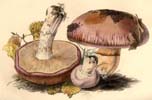


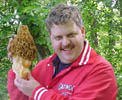

 Key to Gilled Mushrooms Key
Key to Gilled Mushrooms Key Polyporaceae Family
Polyporaceae Family Whiteoporus Tribe
Whiteoporus Tribe Bjerkandera Genus
Bjerkandera Genus





